
The image is made by canva app and describes introduction, cause, symptoms and treatement of Minamata Disease.
- Subject:
- Chemistry
- Material Type:
- Diagram/Illustration
- Author:
- Mariyah Khatri
- Date Added:
- 11/23/2020

The image is made by canva app and describes introduction, cause, symptoms and treatement of Minamata Disease.
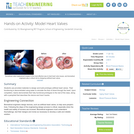
Students use provided materials to design and build prototype artificial heart valves. Their functioning is demonstrated using water to simulate the flow of blood through the heart. Upon completion, teams demonstrate their fully functional prototypes to the rest of the class, along with a pamphlet that describes the device and how it works.

This course provides a foundation for understanding the relationship between molecular biology, developmental biology, genetics, genomics, bioinformatics, and medicine. It develops explicit connections between basic research, medical understanding, and the perspective of patients. Principles of human genetics are reviewed. We translate clinical understanding into analysis at the level of the gene, chromosome and molecule; we cover the concepts and techniques of molecular biology and genomics, and the strategies and methods of genetic analysis, including an introduction to bioinformatics. Material in the course extends beyond basic principles to current research activity in human genetics.

This course focuses on the fundamentals of tissue and organ response to injury from a molecular and cellular perspective. There is a special emphasis on disease states that bridge infection, inflammation, immunity, and cancer. The systems approach to pathophysiology includes lectures, critical evaluation of recent scientific papers, and student projects and presentations.
This term, we focus on hepatocellular carcinoma (HCC), chronic-active hepatitis, and hepatitis virus infections. In addition to lectures, students work in teams to critically evaluate and present primary scientific papers.
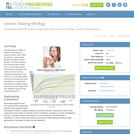
Students apply concepts of disease transmission to analyze infection data, either provided or created using Bluetooth-enabled Android devices. This data collection may include several cases, such as small static groups (representing historically rural areas), several roaming students (representing world-travelers), or one large, tightly knit group (representing urban populations). To explore the algorithms to a deeper degree, students may also design their own diseases using the App Inventor framework.
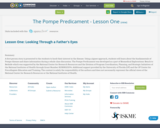
A first person story is presented to the students to hook their interest in the disease. Using a jigsaw approach, students will learn about the fundamentals of Pompe disease and share information during a whole class discussion.
The Pompe Predicament was developed as a part of Biomedical Explorations: Bench to Bedside which was supported by the National Center for Research Resources and the Division of Program Coordination, Planning, and Strategic Initiatives of the National Institutes of Health through Grant Number R25RR023294. Additional support provided by the University of Florida (UF) and the UF Center for Precollegiate Education and Training.
The content is solely the responsibility of the authors and does not necessarily represent the official views of the National Center for Research Resources or the National Institutes of Health.
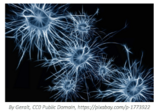
In this project, you will explore a real-world problem, and then work through a series of steps to analyze that problem, research ways the problem could be solved, then propose a possible solution to that problem. Often, there are no specific right or wrong solutions, but sometimes one particular solution may be better than others. The key is making sure you fully understand the problem, have researched some possible solutions, and have proposed the solution that you can support with information / evidence.Begin by reading the problem statement in Step 1. Take the time to review all the information provided in the statement, including exploring the websites, videos and / or articles that are linked. Then work on steps 2 through 8 to complete this problem-based learning experience.
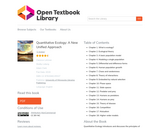
Quantitative Ecology introduces and discusses the principles of ecology from populations to ecosystems including human populations, disease, exotic organisms, habitat fragmentation, biodiversity and global dynamics. The book also reformulates and unifies ecological equations making them more accessible to the reader and easier to teach.
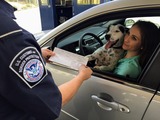
This activity is a web-based inquiry on how to control the spread of rabies in a community. Students are given a hypothetical situation in which rabies has been found in their home community. Interaction between the people, pets, wildlife, and livestock in the area is emphasized. An informative lesson on rabies is included. Students are asked to use different resources to research and develop an action plan to stop the spread of rabies in their community.

With climate change, some parts of the world will get more water, but others will experience droughts. Some will start seeing more mosquitoes, but some fewer. And some regions might actually benefit economically. What’s the deal? In this episode of TILclimate (Today I Learned: Climate), MIT professor Elfatih Eltahir joins host Laur Hesse Fisher to talk about how climate impacts will differ across the globe. Together, they do a quick world tour, exploring how climate change will affect malaria in Africa, water availability in the Nile, and heat waves in Southern Asia.
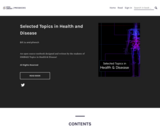
An open source textbook designed and written by the students of HMB422 Topics in Health & Disease!
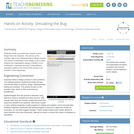
Students modify a provided App Inventor code to design their own diseases. This serves as the evolution step in the software/systems design process. The activity is essentially a mini design cycle in which students are challenged to design a solution to the modification, implement and test it using different population patterns The result of this process is an evolution of the original app.

This lesson introduces principles of small animal health care with research to identify and describe common diseases or parasites, symptoms and causes, treatment, and prevention.
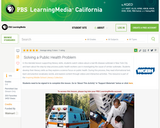
In this lesson designed to enhance literacy skills, students study a disease outbreak and the investigation that followed to understand the role that public health workers play in protecting the communities they serve.

Contact between Native and non-native people forever changed the landscape of North America. European exploration drove many changes to the Northwest, including trade, exploration.This is the teacher guide companion to The State We're In: Washington (Grade 3-5 Edition) Chapter 2. The resource is designed to engage students with a launch activity, focused notes, and a focused inquiry.
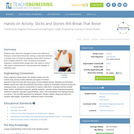
Students learn about the strength of bones and methods of helping to mend fractured bones. During a class demonstration, a chicken bone is broken by applying a load until it reaches a point of failure (fracture). Then, working as biomedical engineers, students teams design their own splint or cast to help repair a fractured bone, learning about the strength of materials used.
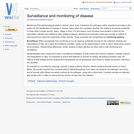
Monitoring of the epidemiological patterns (animal, place, time) of diseases and pathogens within populations provides a vital system for the identification of changes in disease status within this population (whether this relates to all animals worldwide, or those within a single country, region, village or farm). For this reason, most countries have systems in place for the intermittent collection and collation of data relating to disease. Monitoring of production levels also provides a method of informing farmers about the productivity of their animals. These processes can be described as monitoring systems.
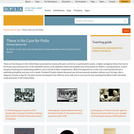
This collection uses primary sources to explore the polio epidemic and vaccine. Digital Public Library of America Primary Source Sets are designed to help students develop their critical thinking skills and draw diverse material from libraries, archives, and museums across the United States. Each set includes an overview, ten to fifteen primary sources, links to related resources, and a teaching guide. These sets were created and reviewed by the teachers on the DPLA's Education Advisory Committee.
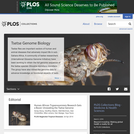
Tsetse flies are important vectors of human and animal diseases that adversely impact life in sub-Sahara Africa. A community of tsetse researchers (International Glossina Genome Initiative) have been working to obtain the full genome sequence of the tsetse species Glossina morsitans morsitans. The group have also mined the genome data to advance knowledge on functional aspects of tsetse and African trypanosome biology. This collection describes findings on tsetse's salivary gland biology, olfactory chemistry, lactation process, acquaporin proteins that play a role in lactation, oxidative stress responses during pregnancy, gut peritrophic matrix analysis and horizontal transfer events discovered in tsetse's genome from the symbiont Wolbachia. Further manuscripts reflect on the historical aspects of sleeping sickness epidemics that have plagued sub-Sahara in the 20th century.
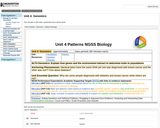
Anchoring Phenomenon: Identical twins have the same DNA yet one was diagnosed with breast cancer and the other was not?? One about diabetes? Unit Essential Question: Why are some people diagnosed with diabetes and breast cancer while others are not?